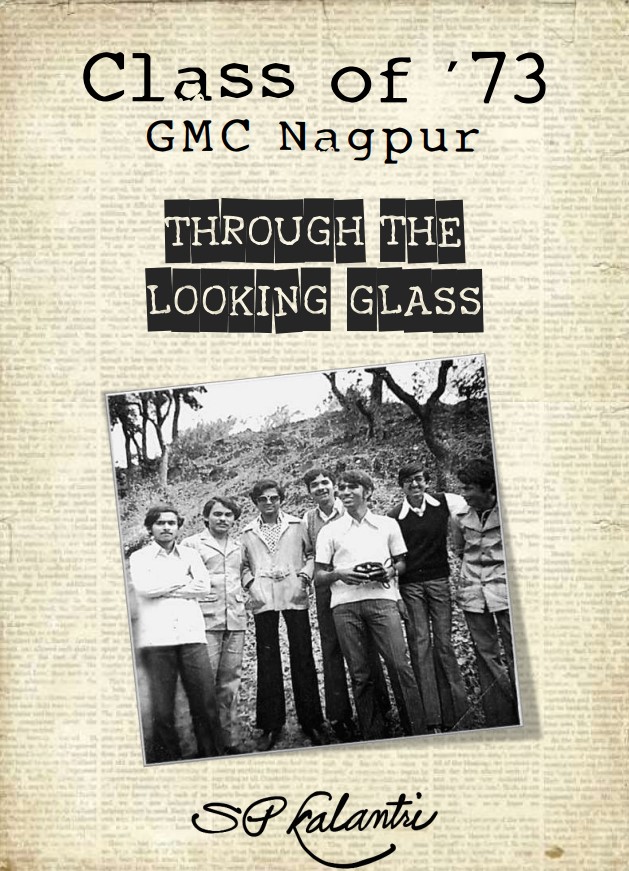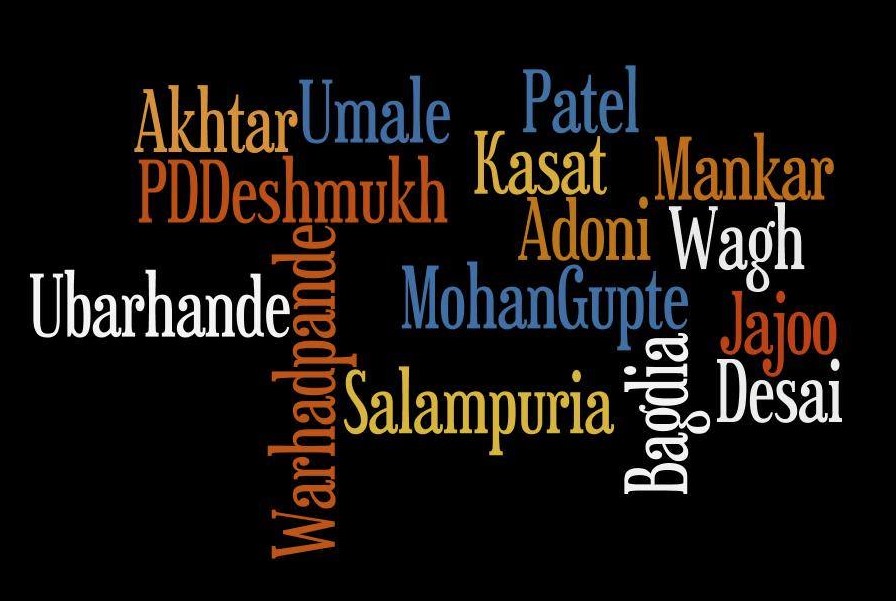
This book profiles the art and craft of the class of 1973. A class that is 48-year-old now.
It seems like it was only yesterday that we got into Government Medical College Nagpur. 45 years after our admission, when we paused to reflect on how we changed and evolved between 1973 and 2018, we realized the magnitude of the big change.
In the summer of 2013, reunion enthusiasts from the class of 1973 started toying with an idea of a class reunion. The 25th reunion took place in 1998 at Nagpur; the 30th followed in 2003 at Akola and the 40th at Nagpur. The time is ripe for the 45th meet at Gondia— which eventually shall take place in 2019.

It was important for the classmates to put a name to a face before they fall prey to Alzheimer. I wondered if I could record not only the who-what-why-when-where-how of the class of 1973, but also its spirit, determination, and achievements. This book, therefore, is as much about the chronicle of the talented individuals of the class of 1973 as it is about their struggle to fight against all odds.
In June 2013, I began this task— telephoning them, writing emails, texting messages, visiting Facebook pages, and talking face-to-face. In 2016, the 1973 WhatsApp group was created which brought us a bit more close together. The journey was long but pleasant—at times without a map. I enjoyed every moment of recording the life and times of classmates, keeping in mind RL Stevenson’s famous adage, “To travel hopefully is better than to arrive.”
| As I spoke to my classmates, I began to realize how difficult their early days were. They had yearned to attend medical school since the tender school days, knowing itwould be challenging but yet not fully prepared for what lay ahead. A little over quarter of them came from villages without electricity, grew up in poverty, and could barely speak a sentence in English. They struggled hard during their GMC days—devising their own mechanisms to beat poverty, overcome the hardships, cope with English illiteracy and outgrow inferiority complex. As was common at that time, they did numerous chores to help make financial ends meet for their education. Through hard work, talent, grit and a bit of luck, many were able to move from obscurity to fame, and went on to head the departments and lead the institutions. From their humble beginnings in Vidarbha as children of school teachers, farmers or clerks, or even illiterate parents, their stories provide a lesson in ingenuity and adaptability. |
My first draft was ready when we met at the Vidarbha Cricket Association Ground, Jamtha, Nagpur in December 2013. During the reunion, I had passed this draft around, asking 130- odd- classmates to browse through the draft and check the accuracy of the information.
During telephonic conversations, I could not resist the temptation of collecting information on parents, spouse, children, occupation, births, weddings and so on. The numbers were good enough to permit a statistical analysis. You would find Infographics (pages 498-538) which highlights interesting facts about the class of 1973.
Now that I have switched off my desktop, I must acknowledge those who have lent their time and efforts for shaping this book. They spoke to me with a startling candour. I got an insight into the fascinating lives of my classmates I admired – and was secretly jealous about!
Let me begin by profusely thanking TF Badodekar. Strange as it might seem, although we shared a common discipline—Medicine—I had hardly spoken to him until 2012. Came the summer of 2013, and the class anecdotes began to fill our mobile conversations. Beginning June 2013, hardly a day passed by when we missed a telephonic conversation. He dug up lost contacts from their graves, connected me to them, extracted their information and dictated the data to me telephonically—spending numerous hours talking on and about the class- helping me capture the history responsibly, accurately and truthfully. I can’t find words to describe his excitement, exuberance, enthusiasm, and energy. He left us in the winter of 2014, leaving behind unforgettable memories of his zest for life. He would have been so happy to see his contact campaign brought to fruition. Alas, that was not to be.
Manik Khune, the opening batsman of the class of 1973 also deserves a special mention. I couldn’t have done this without his dedicated help, at each twist and turn. By sheer persistence, he managed to persuade me to spend endless sessions with classmates, pulling me on the right track whenever I veered off it. He was very committed and focused and knew “Now it can be told” stories of many of our classmates located in obscure villages and towns in Vidarbha. He also profiled a few classmates, edited, and commented on a part of the manuscript.
Harsha Sheorey and Sharad Jaitly— although located Saat Samunder Paar in Melbourne and New York respectively—not only set the ball rolling, but also batted through full fifty overs to help the organizers reach the target. They created a Class of 1973 group on Facebook, kept on inquiring about the happenings, and spent a lot of time maintaining the momentum.
Many unusual things happen to us all the time; being able to see is easy, but being able to capture that very moment is probably the hardest part. Raymond Maugham flew from Barbados only for the 2013 class reunion—his towering personality looming large in the VCA stadium, the venue of the class meeting. A professional photographer, he used his camera with extraordinary deftness and captured the moments for posterity. Passionate about his work, Raymond brought much more to shoots than just a photograph. I owe most pictures in this book to him.
In this task, Ravindra Jharia, Mohan Gupte, Uday Gupte, Vivek Deshpande, Ramesh Mundle,
Vilas Tambe, Tara Bhat (Rajani Kale), Waqar Mohiuddin Taji, Avinash Deshmukh, Makhan Gupta and Chandrashekhar Meshram helped me collect missing pieces of the jigsaw— a help for which I am grateful to them. Indeed, the class reunion might not have got started but for the tenacity with which these friends kept working.
Vinayak Sabnis—the class of 1973, knows so well—is an excellent storyteller. He told me several reminiscences and amusing stories of the 90 club—many of which I have used liberally in creating individual profiles.
Finally, I must thank Bhavana, my wife. Mildly amused to begin with, she overcame her impatience, endured my whims, fancies, and idiosyncrasies and gave me enough free talk—time and unrestrained access to the computer to write this book. When I began writing these profiles, she thought—and so did I – that I would make just a few telephone calls, exchange pleasantries, collect information and finish the book in a few weeks. It took me much longer to finish the book than we mutually surmised. Had she not put up with my eccentricity, this book would have found itself in the recycle bin of my computer!